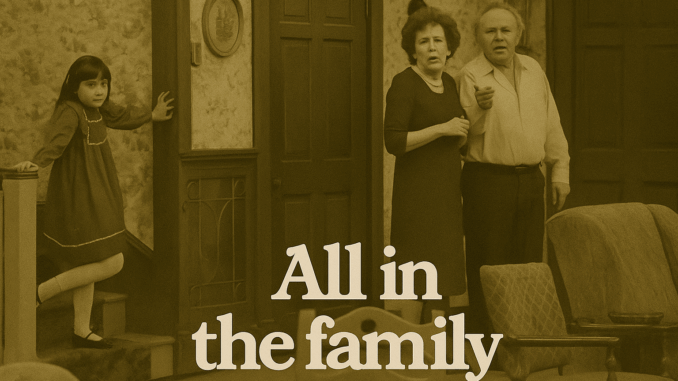
Discover why Archie Bunker’s iconic chair from All in the Family sits in the Smithsonian. Learn the history, cultural impact, and lasting legacy of this famous TV relic.
Sit in History: The Story Behind Archie Bunker’s Chair at the Smithsonian
When people think of All in the Family, one image often comes to mind: Archie Bunker sitting in his worn, floral armchair, ruling over his living room. The chair wasn’t glamorous, but it became one of the most recognizable pieces of furniture in television history. Today, it’s preserved in the Smithsonian’s National Museum of American History, symbolizing the cultural influence of one of TV’s most groundbreaking sitcoms.
A Chair That Defined a Character
Archie Bunker, played by Carroll O’Connor, was the loud, opinionated head of the Bunker household. His chair reflected his personality—well-worn, immovable, and central to the home. Producers deliberately chose the shabby chair to emphasize Archie’s working-class roots, making the show feel authentic to millions of viewers who saw themselves in the Bunkers’ story.
From Prop to National Treasure
In 1993, Archie’s chair was officially donated to the Smithsonian Institution. It joined the ranks of other iconic artifacts, such as Dorothy’s ruby slippers from The Wizard of Oz. The chair now represents not just Archie, but also the way All in the Family reshaped television by tackling controversial social and political issues with humor and honesty.
Why It Still Matters
Archie’s chair is more than just an old piece of furniture—it’s a cultural symbol. It reminds us of the power of television to spark conversations about race, class, gender, and politics. For fans who visit the Smithsonian, standing in front of the chair feels like stepping back into the living room where America once laughed, argued, and reflected together.
A Lasting Legacy
Decades after All in the Family ended, Archie Bunker’s chair continues to resonate. It’s a reminder that even the most ordinary objects can take on extraordinary meaning when tied to moments of cultural change.
